This post is also available in:  Deutsch (German)
Deutsch (German)
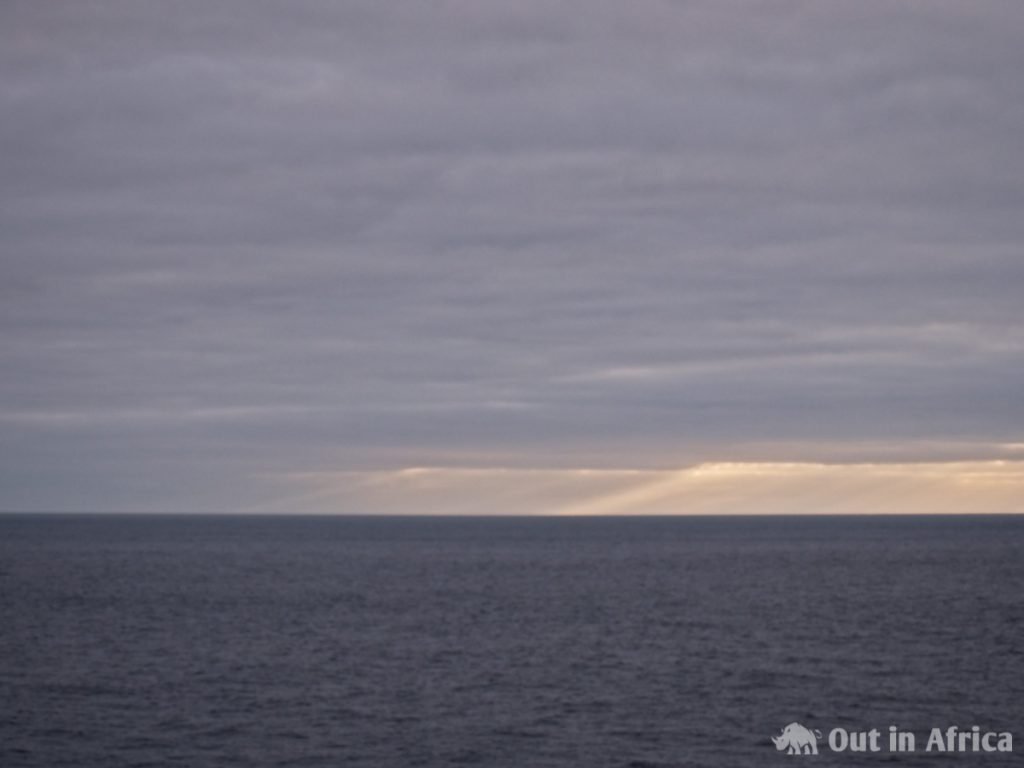
I’ve made up my mind that today is the day of bluewinged flying fish.
In our cabins it is cool. I put on something long-sleeved again. That’s fine for hunting flying fish. In this way the sun cannot burn my arms and legs.
After breakfast I make myself a coffee in my thermo cup. To be on the safe side I also pack my red windbreaker.
I go to the bow. The weather is wonderful. The sun shines from the sky, the sea is deep blue. Today the swell is not so strong anymore and the wind has calmed down. The waves don’t have foam crowns any longer. It is only a little bit cool. I am glad to have my windbreaker with me.
The flying fish are already active. And I think that the red-brown winged ones are bigger here than in the days before. I happily take pictures of them. I already have a lot of photos of them, but I want to improve my technique, the coordination of my left hand, which guides the camera, eye, right thumb to focus and right index finger to pull the trigger. I get better and better, too. I manage to follow the fish longer and take more photos on the mark.
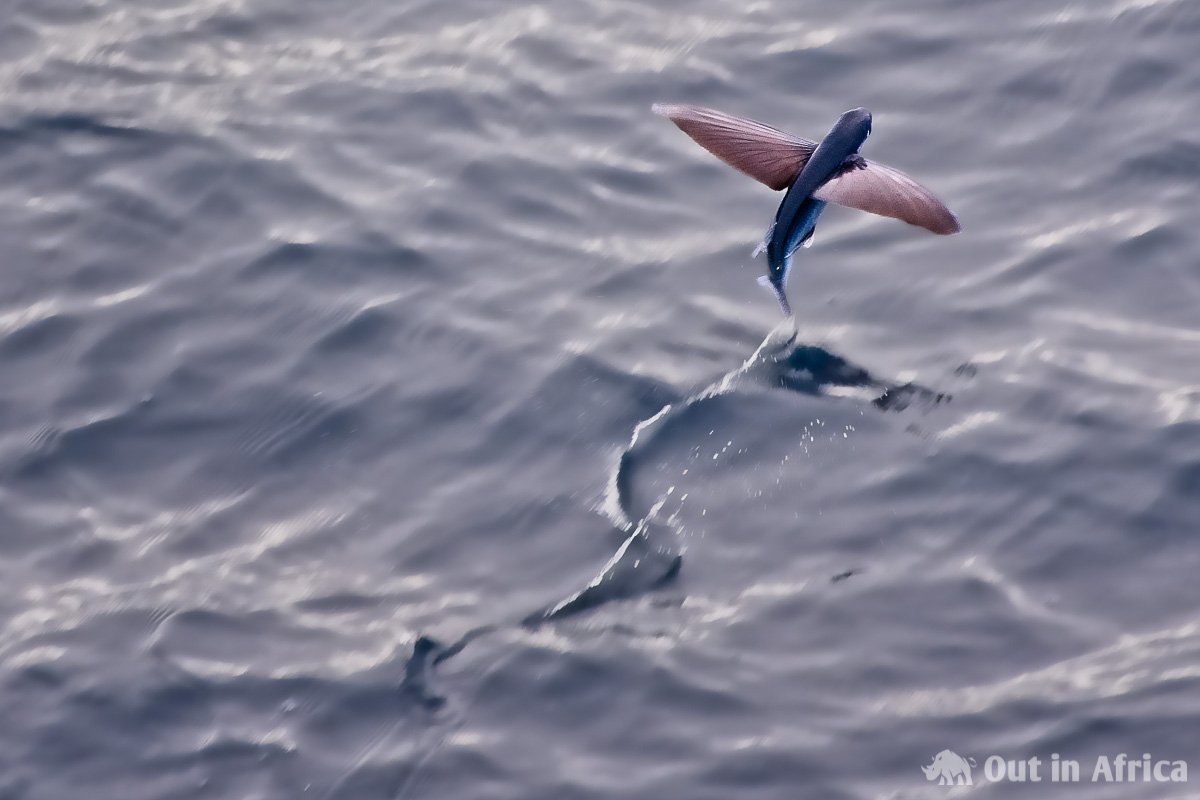
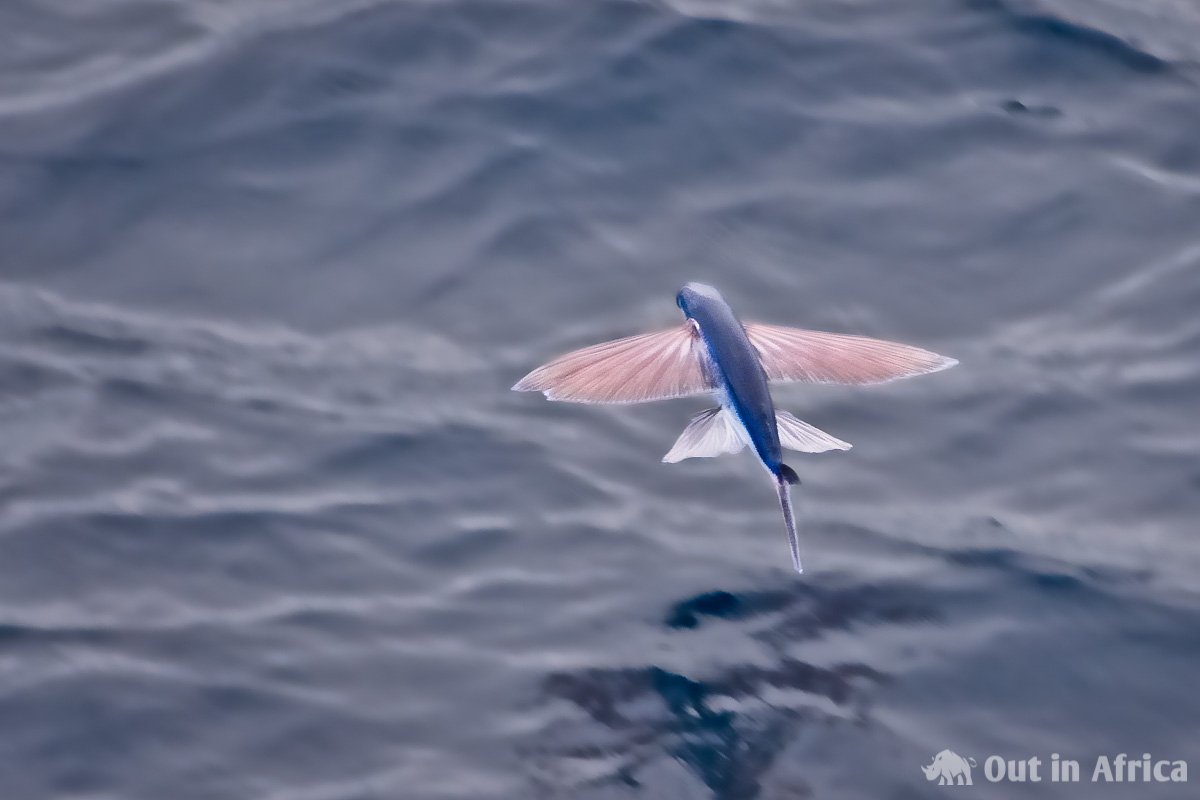
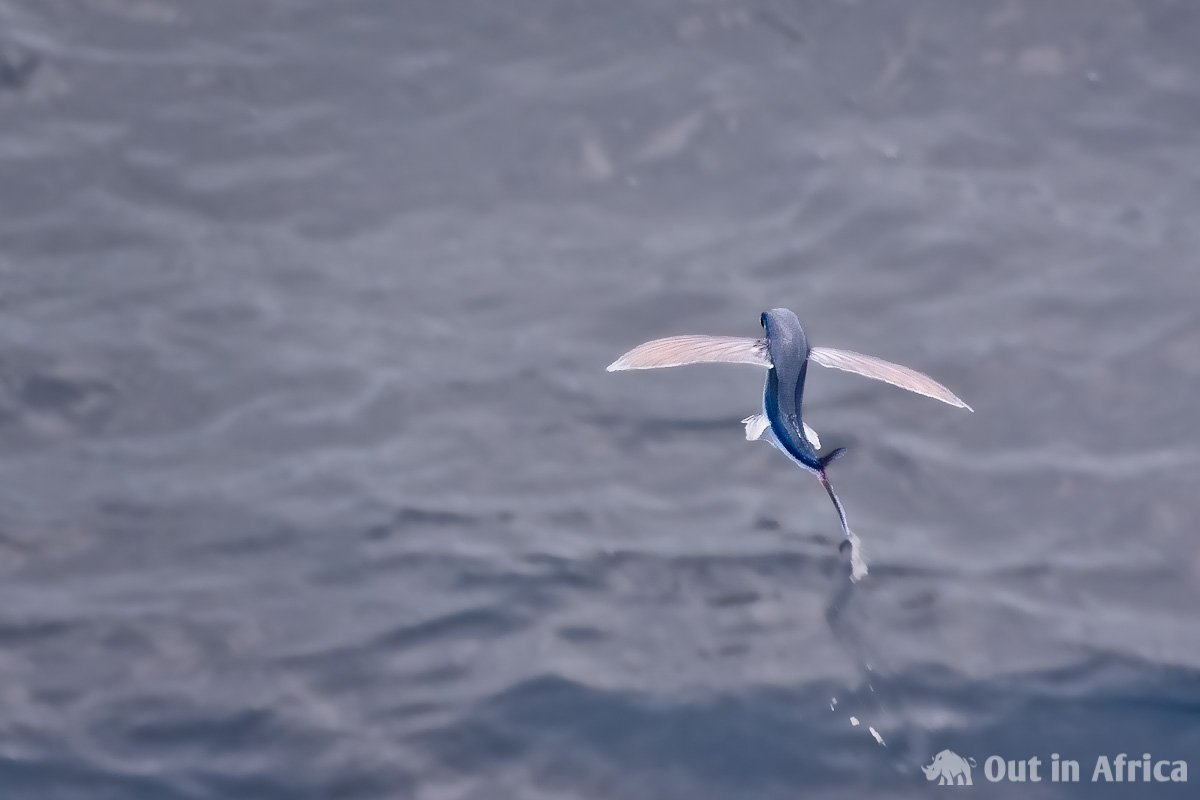
Several kindergartens of finger-length little fish fly up.
The little ones have very bright wings. But there are also bigger ones with light grey wings. They are not as skilled as their reddish-brown counterparts, but they manage to fly over one or two waves.
There are many more birds. While yesterday a bird so far from the land was a sensation, today there is always one passing by. However, they are so far away that I cannot identify them without binoculars. A bird swims calmly on the water. It is very big and brown. As the ship approaches, it flies up. It has a huge wingspan. I think it’s a shearwater and I take pictures so that I can identify it later when I load it onto the computer.
[Addendum: It’s a Cory’s Shearwater]
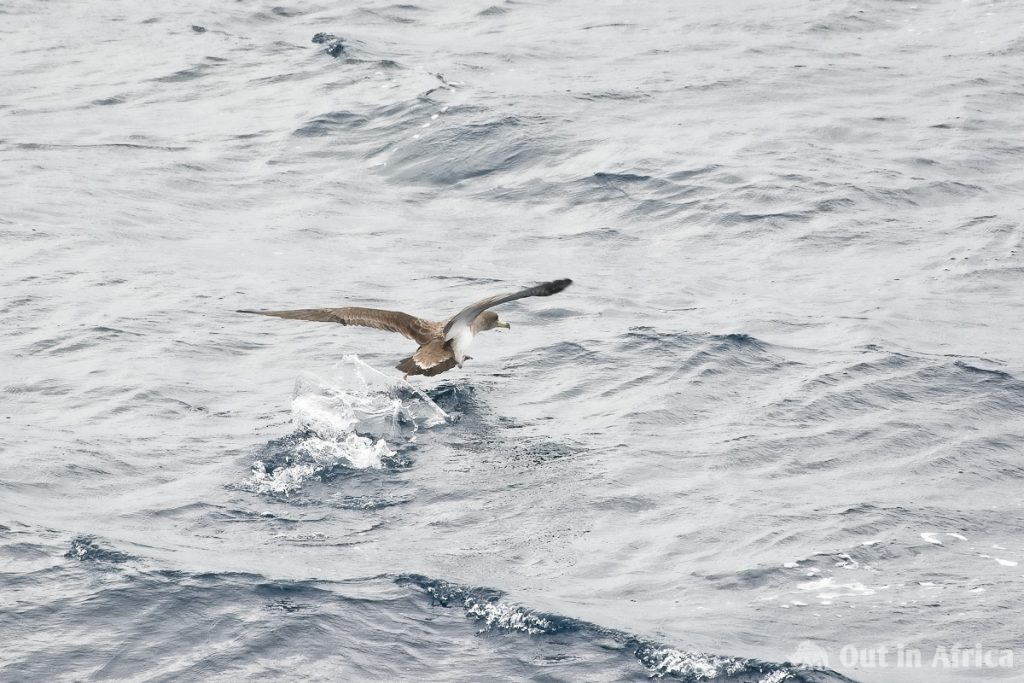
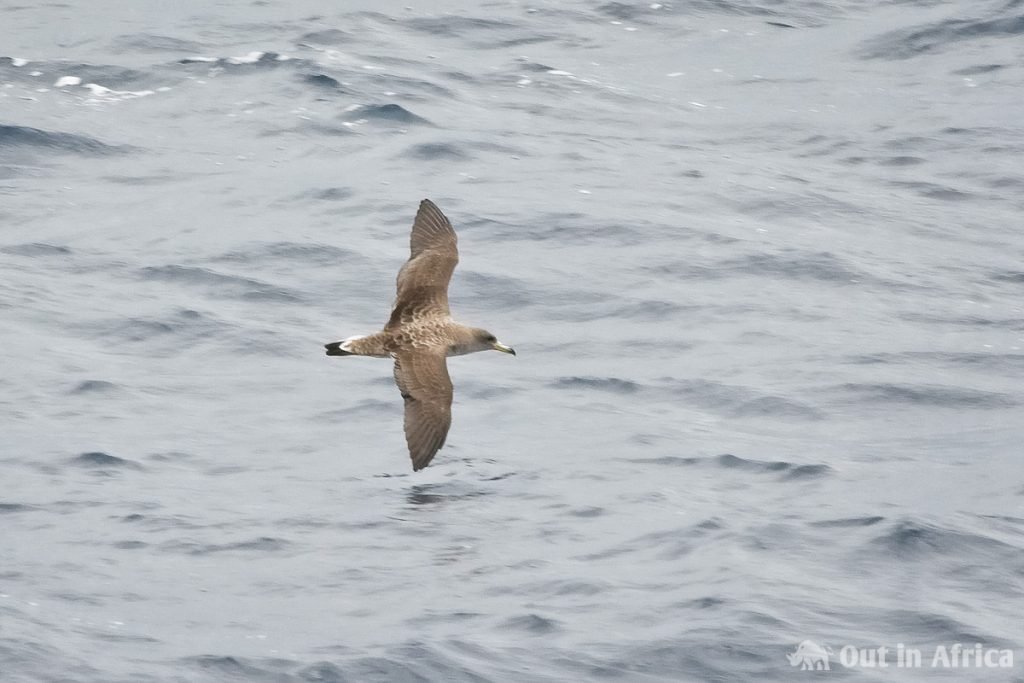
I can enjoy myself for hours on end. In between I take a break, drink my coffee and look over the waves, always on the lookout for something bigger.
Pierre comes through the hatch at 11:00. I cannot report any extraordinary sightings. Flying fish and a shearwater. That’s it. Nevertheless, I am not bored.
Together we stand at the railing, chat and shoot flying fish.
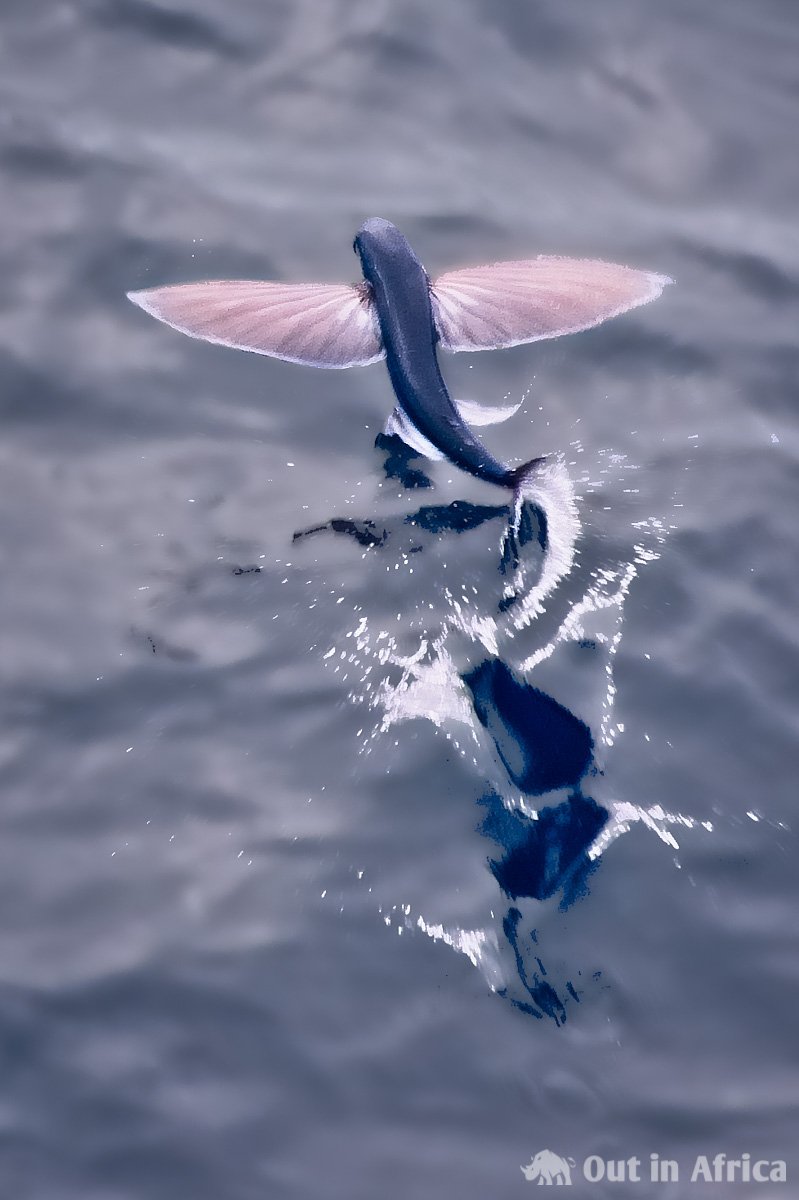
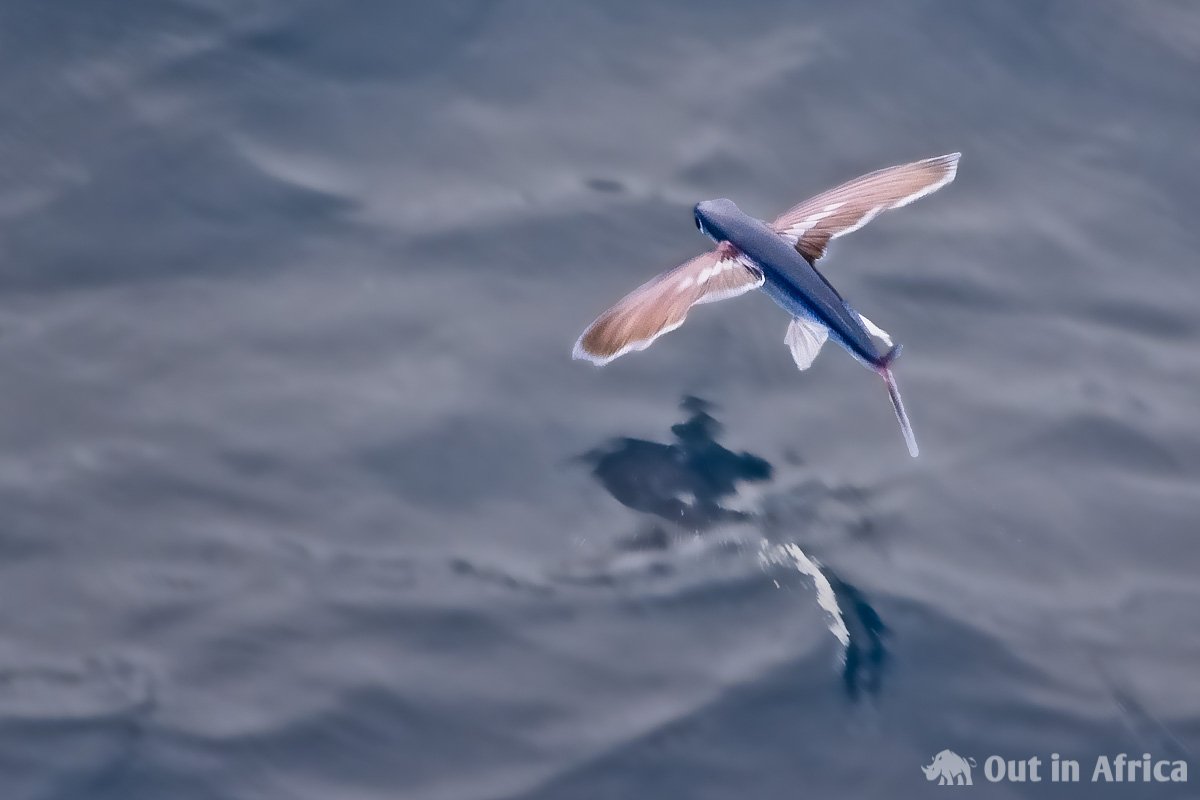
Suddenly I see two dorsal fins. Dolphins! They are very close. They swim from left to right past the bow. We are a little excited.
Pierre leaves after a while. It is time for his aperitif before lunch.
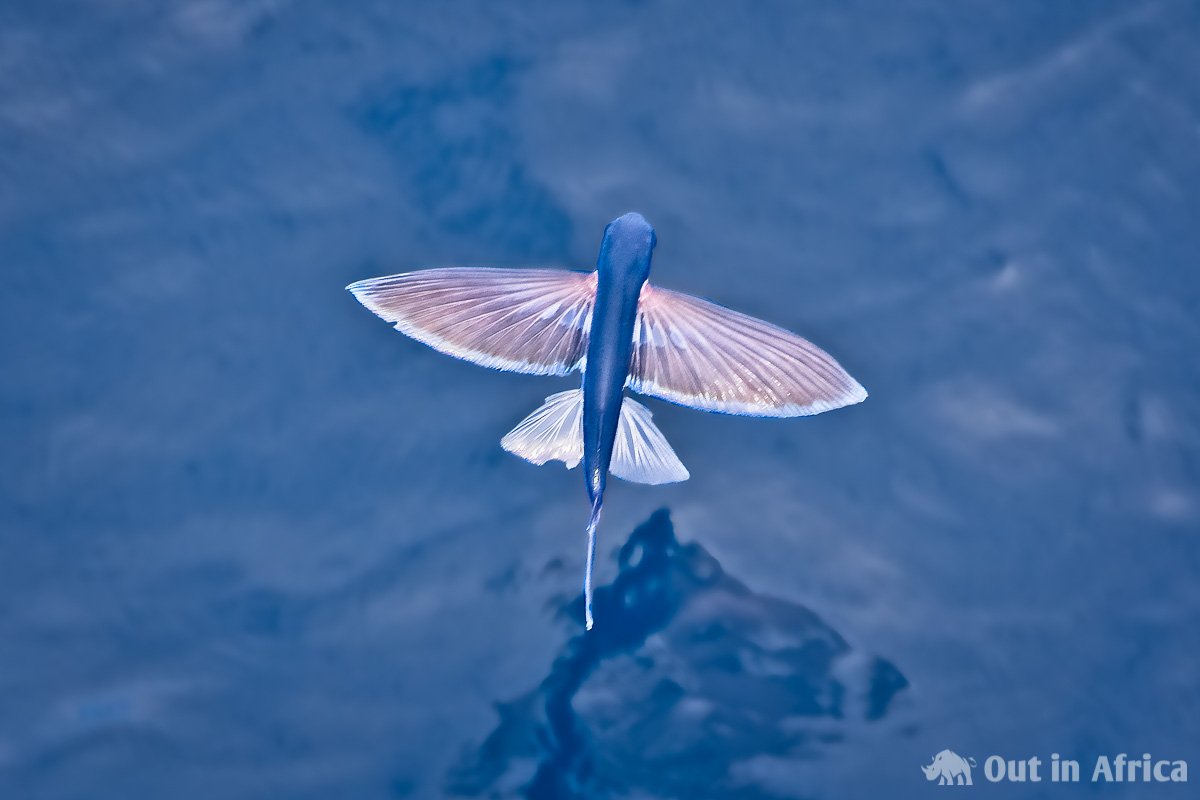
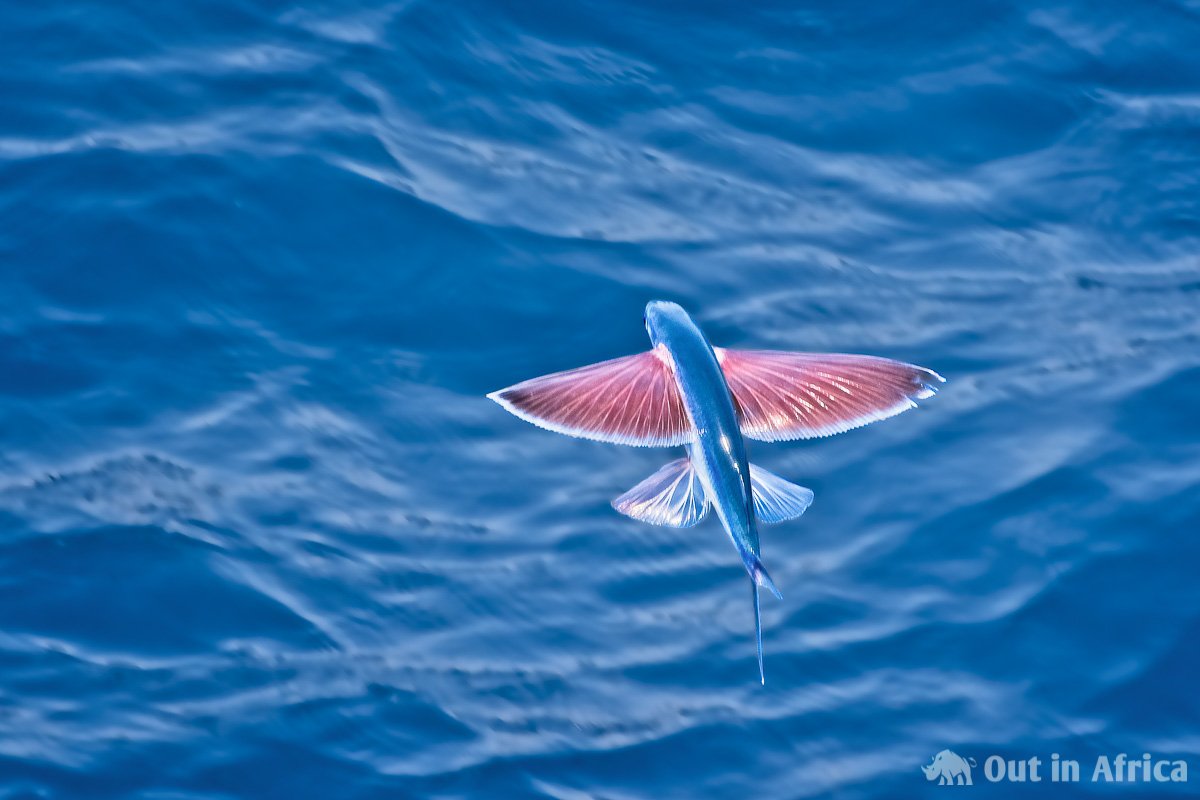
I get a cramp in my hands. Especially the left hand, which mainly carries the weight of the camera and the lens, is sore. After a few stretching exercises I feel better.
I see another dorsal fin. One more dolphin swims by. Dolphins are cheerful animals. Of course because they always have the facial expression of a smile, you get the impression, but they enjoy life when they surf on the bow waves of the ships that pass by from time to time.
At one point I see a giant flying fish. The rustwinged ones today were already big, but this one breaks all records. Probably he is the grandfather of all the others. Very elegant and calm he flies over the waves, without any hassle. It also has a different colour than the others – a light yellow or orange or brown. I manage to take a few photos of it.
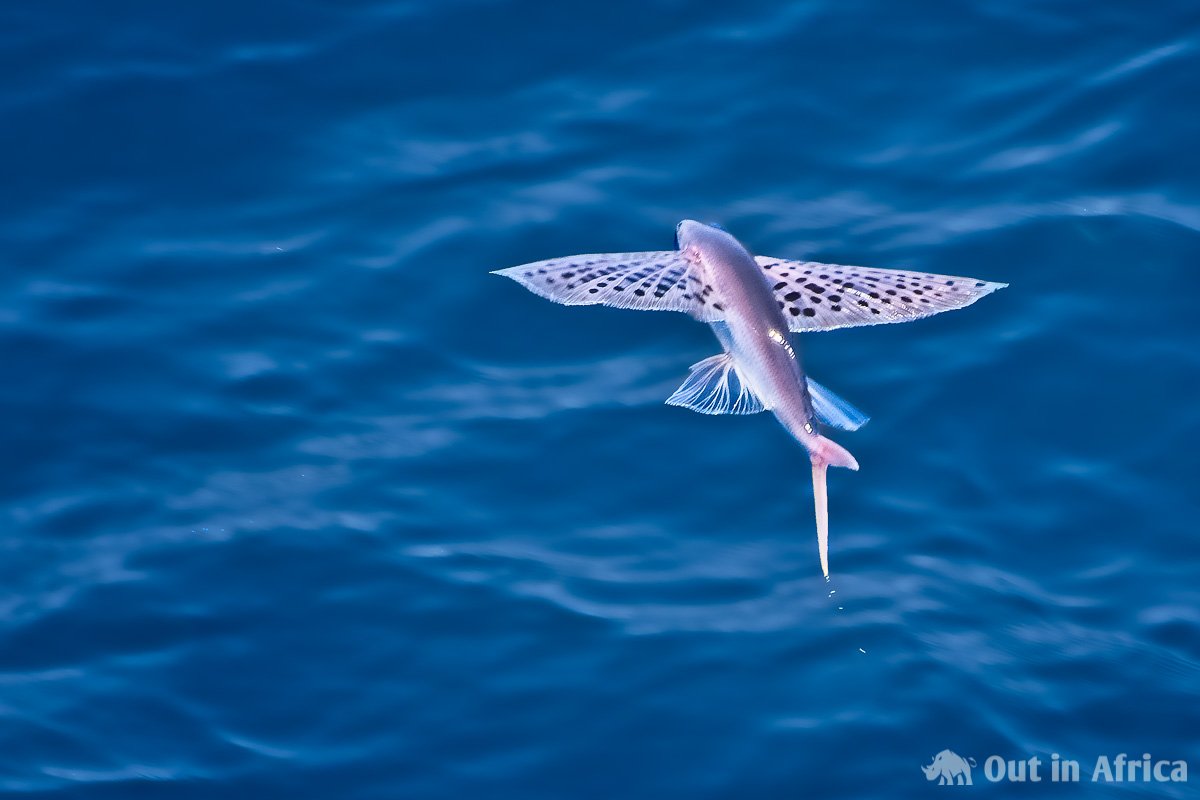
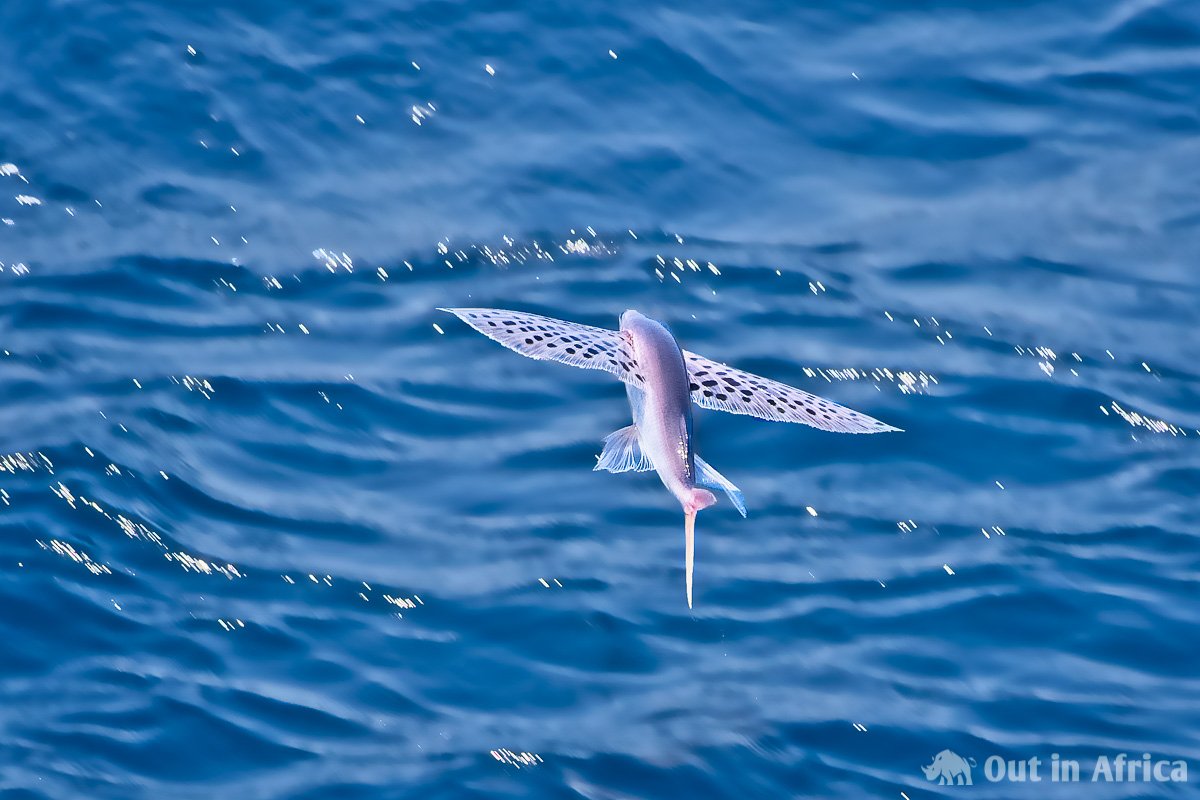
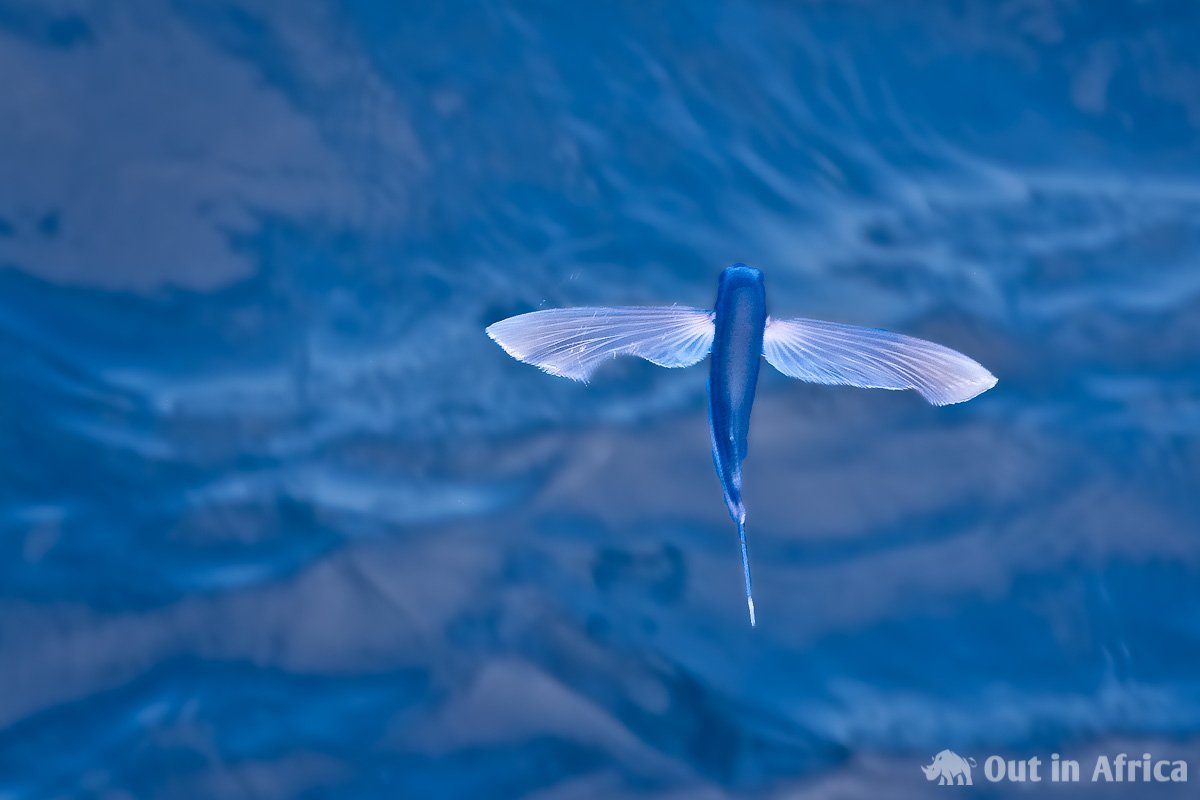
At lunch the captain reports that the cinema is ready. A few sailors have been working for days on installing a beamer and a screen in the officers’ lounge. This room is only used when one of the officers or a passenger wants to wash his laundry. Nobody else sits there. The room also houses a small library, mainly of Polish books. Now it will also be a cinema – the first of the MACS fleet. Pierre and I are invited to the inauguration. Twentyhundred. Of course we agree.
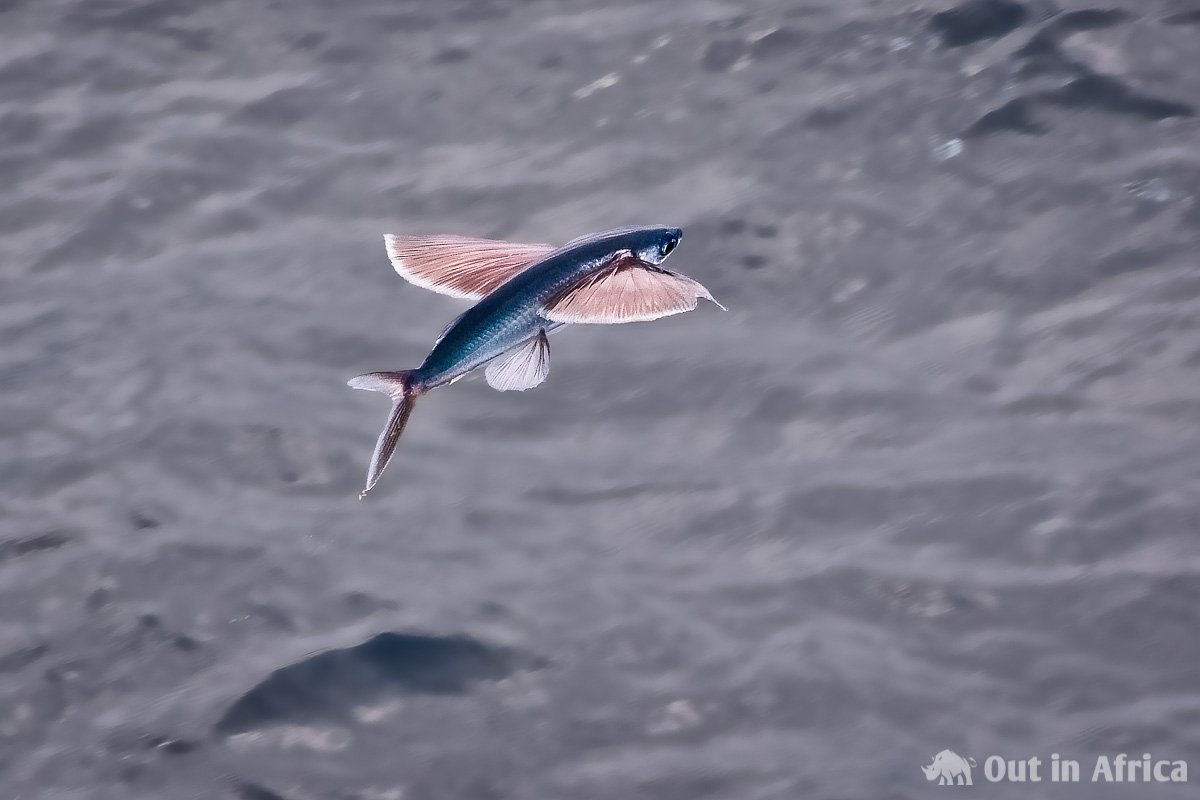
When I get to the bow balcony after lunch, the captain and his wife are already there. Our stories of dolphins lured them forward. He tells me that right at the beginning, when he stepped on the railing, he spotted a mola mola, a sunfish. I remember seeing a photo of these animals in his Two Oceans book and am very jealous of his sighting.
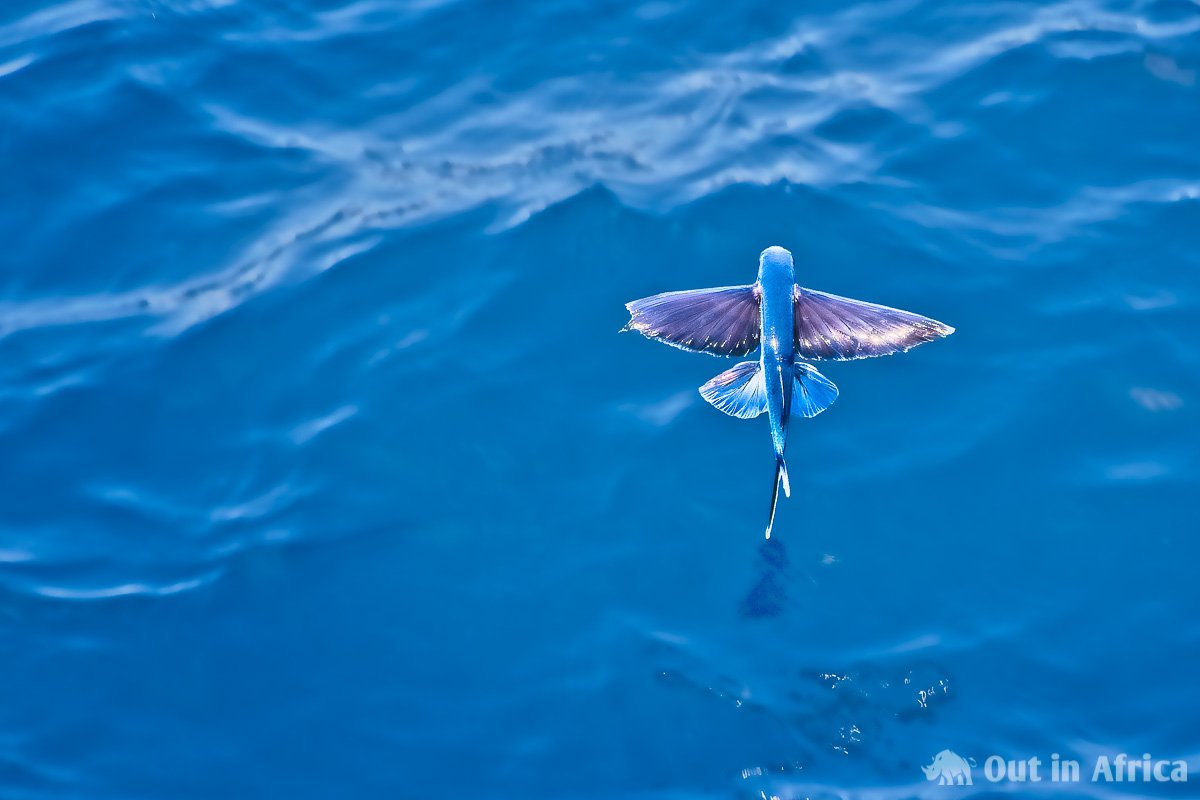
For an hour we stand at the railing photographing flying fish and one or the other shearwater.
“Mola Mola!” the captain shouts. I only see a fin disappearing under the bow. Too bad! I would have liked to have seen the fish.
The captain then says goodbye. He still has to work.

My attention is not only focused on the flying fish. Again and again I keep looking at the water in the hope of seeing something else. And in this way I also see the white spray that does not come from a wave. It is a few hundred meters further on. With my telephoto lens I zoom in. For the ninety-eleventh time on this trip I regret not having taken binoculars with me. A whale? It looked exactly the same a few days ago when I saw the big whale.
It’s a whole bunch of dolphins cavorting over there. Again and again they jump out of the water.

“Come here! Come play with the bow wave!” I think.
But they are too far away. Soon they disappear behind the ship.
Pierre arrives shortly afterwards. He saw the dolphins from the bridge.
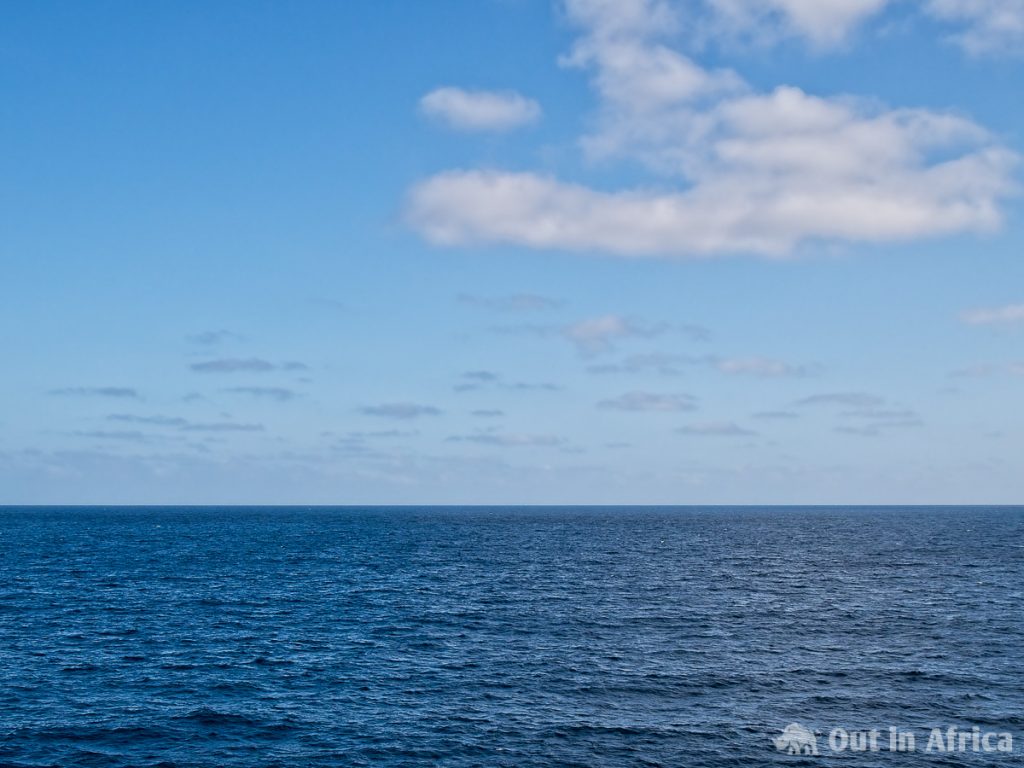
We have a discussion, almost a quarrel, about the clouds.
A few days ago I noticed that the brown, muddy colour that the sea sometimes has is caused by the reflection of the clouds. When I told Pierre about it, he disagreed. The color is caused by the shadow of the clouds and only by the shadow.
In the morning, he had said to me: “You have your opinion. I have my opinion”. I thought that we had ended the topic with this, under the motto “We agree to disagree”. And it wasn’t that important to me to agree with Pierre on the subject. But Pierre doesn’t want to leave it at that.
The argument begins when we look at the deep blue sea. “What a beautiful blue,” I say.
“Yes,” he says. “No clouds, no shadows, just blue.”
“Yes, but if you look to the left, the sea is brown. That’s because of the reflection of the clouds over there,” I say and point to the clouds on the left.
He explodes. “The colour is from the shadows!”
“What shadow?” I ask.
He: “From the clouds to the right!”
Me: “Shadow gives the sea a grey colour. Shadow makes the sea dark. But it’s bright over there. That’s from the clouds on the left. They are reflected in the water.”
Of course, the color may have been caused by the reflection of the clouds on the left and the shadow of the clouds on the right. In any case, the reflection also plays a role.
He sees it differently.
“I have been living on a lake for 60 years. I know water and clouds. That’s shadow.”
I can’t argue against that. So I go back to the railing and look for flying fish.
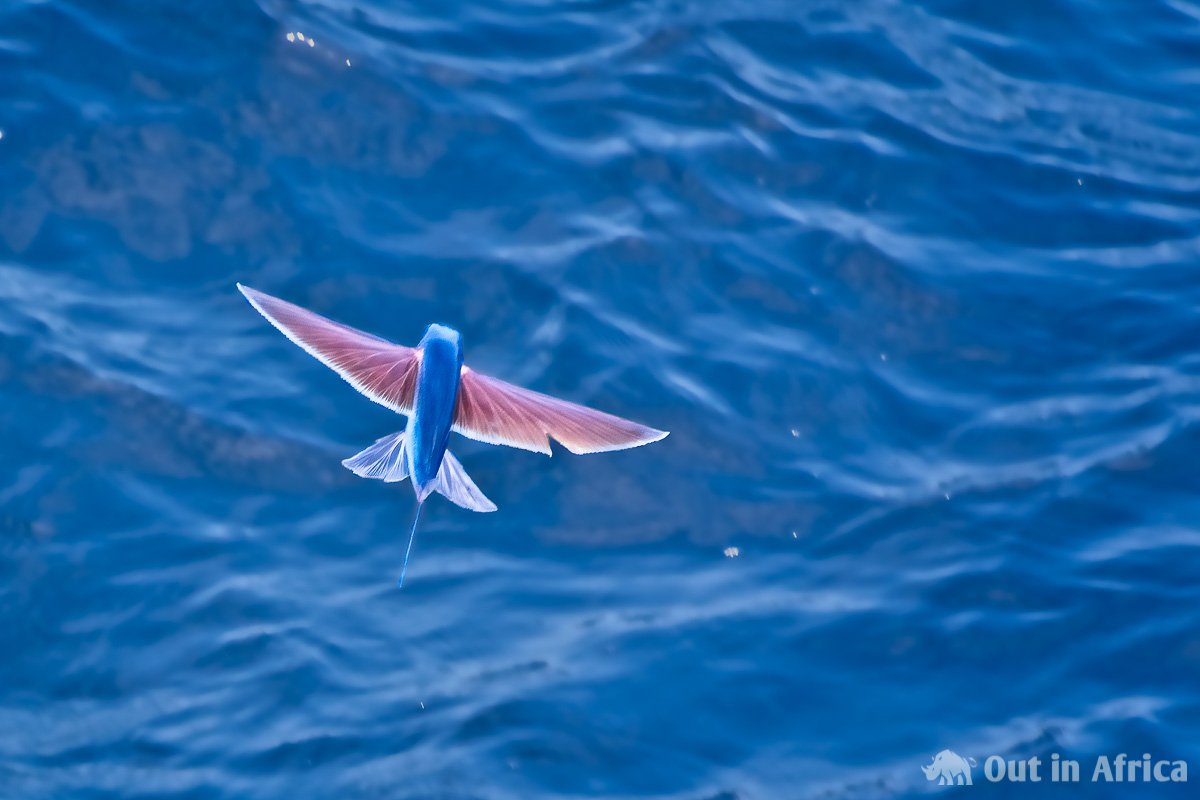
He stays for a while. When I turn around later, he has disappeared.
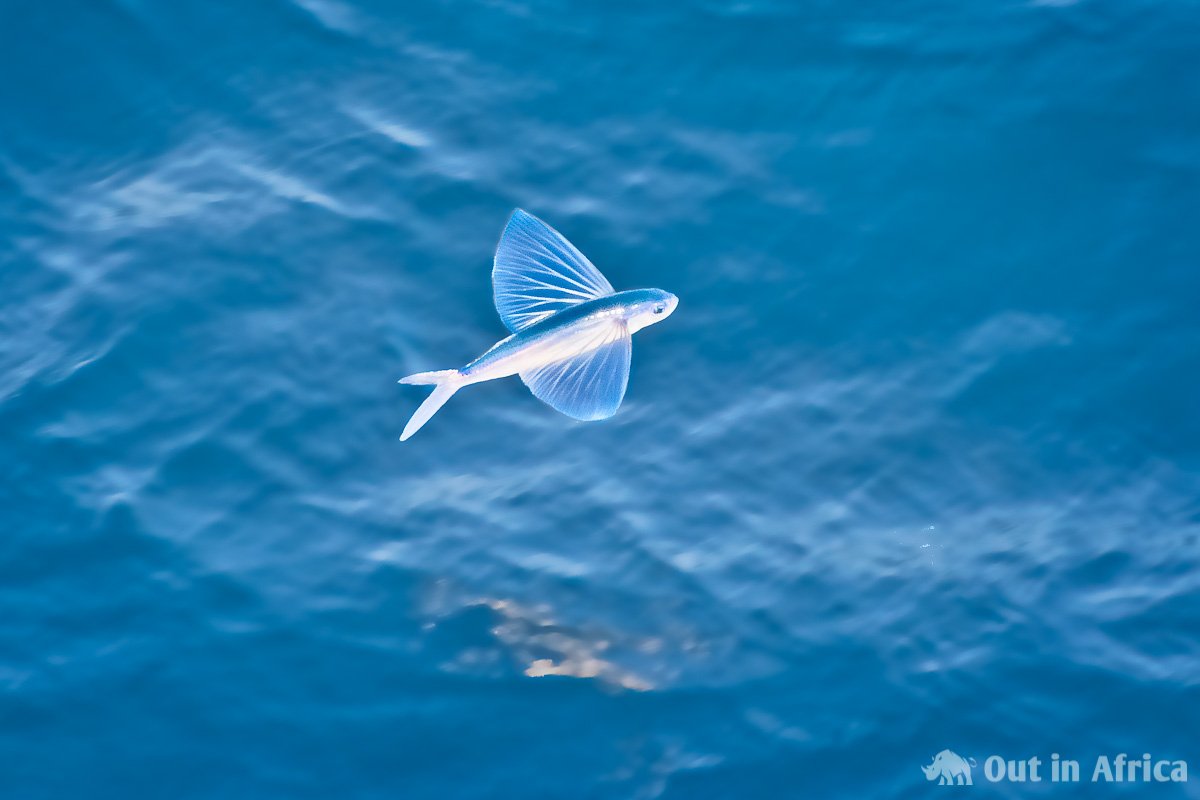
The sea has changed in the course of the day. If you look into the distance, it’s blue. But if you look down, where the rays of the sun are bundled in the water, it is green.
The timing would be right. We reach the Benguela Current, which flows out of Antarctica on the west coast of southern Africa. The cold water has a high plankton content, which gives it its green colour.
I already noticed that in the afternoon there are not as many flying fish as in the morning. Maybe it gets too cold for them. But whenever I think that I won’t see any flying fish on this trip anymore, because I haven’t spotted one for a quarter of an hour, there are still a few jumping out of the water. Most of the time they are very big fish.
There’s a waxing moon to the east. In the west the sun sinks. The water is getting darker.
I look at the clock. Oh my goodness! I’m missing dinner!
During the whole day I did not succeed in photographing a bluewinged flying fish.
“Fish ‘n chips,” I say as I enter the officers’ mess and smell dinner.
It’s chicken nuggets with fries.
The captain gives us two important pieces of information:
First, we will be able to dock immediately when we reach Walvis Bay. I.e. Sunday is arrival
Secondly: in the coming night the clock will be changed to Namibian time. We will loose an hour.
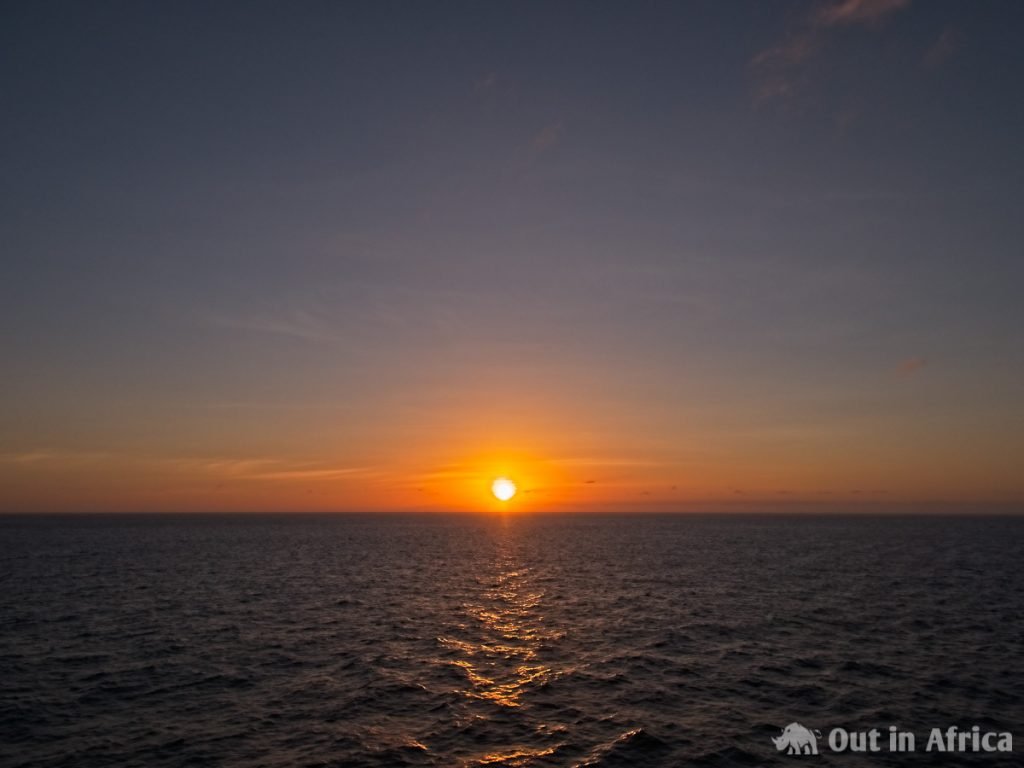
I go to the officers’ lounge at 8:00. The captain, his wife, Pierre and the Chief Engineer are already there.
The cinema works. A beamer on the ceiling throws a music video onto a pull-out screen. The sound runs via Bluetooth over a music system.
The captain asks Pierre if he had already experienced a cinema on board on his other three voyages. No. There was no cinema even on the ultra-modern container giants.
Then comes the last guest, the Chief Officer, who was on duty on the bridge until 20:00. Everyone, except the captain’s wife, gets a bottle of beer. The show can begin.
We watch the Simon & Garfunkel concert in Central Park.
There is a short discussion whether this beautiful music could still be a hit today if it had not been a hit in the 70s. The captain says that the music is timeless. I think that today other music is heard.
As always I can’t decide if I like “Bridge over troubled water” or “Sounds of Silence” more.
Finally two songs by Sadé. In the end we remember that we will loose an hour because of the time change and decide to go to bed.
Pierre jokes that I will miss my sunrise tomorrow.
I look at my navigation app at 23:00. We are at S18° 00.391′ E9° 28.464′. The Namibian coast, the Skeleton Coast, is 245 km away from us. There are still 760 km to Walvis Bay, about 28 hours.
I still have to change the time zone in my smartphone so I don’t miss my sunrise.
Would you like to see an overview of all articles about my journey on the cargo ship Bright Sky? Click here for a table of contents.
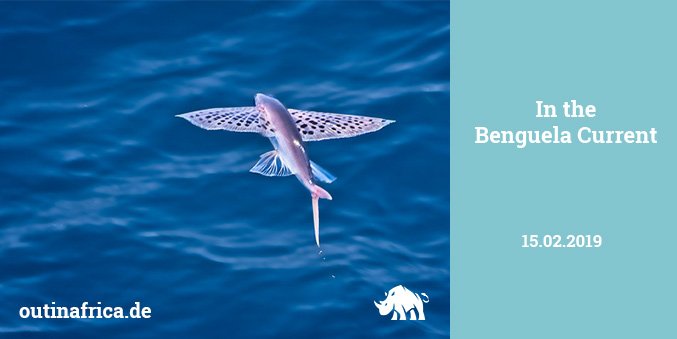
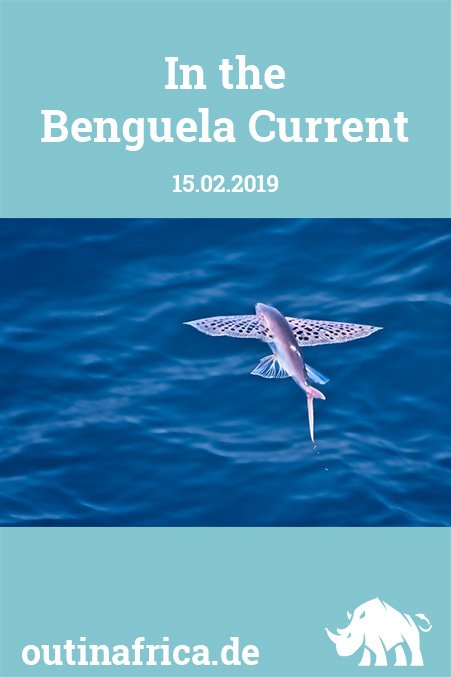

Leave a Reply